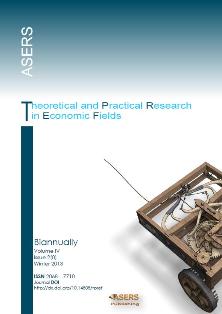OVERSUPPLY OF LABOR AND OTHER PECULIARITIES OF ARTS LABOR MARKET
OVERSUPPLY OF LABOR AND OTHER PECULIARITIES OF ARTS LABOR MARKET
Author(s): Milenko Popović, Kruna RATKOVIĆSubject(s): Economy
Published by: ASERS Publishing
Keywords: household production function; allocation of time; arts; expected benefits
Summary/Abstract: There are several striking peculiarities of the arts labor market that have attracted the attentions of researchers in the last several decades: first is constant long run excess supply of arts labor; second, artists are more likely to be multiple-job-holders than other professions; third, artists pay significant earning penalties; finally, there are huge variations in artists earnings and huge inequalities among artists themselves. In order to explain these peculiarities, in this paper we developed two dynamic models of an artist’s behavior and arts labor supply. In the first model proposed here an artist is depicted as someone who is hired on the arts labor market and paid for his artistic time. In the second model an artist is described as someone who sells his products, like paintings for instance, on the market for artistic products. In order to make these models dynamic, an artist’s productivity is here supposed to be a function of accumulated human capital of the artist. As a consequence, the supply of labor in the arts market appears as the result of an inter-temporal process of resources allocation. Both models end with the same result: the cost of producing a unit of an artistic commodity in a particular year should be equal to the present value of expected streams of all monetary and nonmonetary benefits generated by production of a given artistic unit. This result appears to be pretty suitable for formalization of several existing hypotheses aimed at explaining arts labor market peculiarities. Especially, by referring to the stream of expected nonmonetary benefits, models developed here are able to formalize the most promising among these hypotheses according to which an artist’s need for self-discovery and self-actualization is the driving force in explaining the oversupply of arts labor.
Journal: Theoretical and Practical Research in Economic Fields (TPREF)
- Issue Year: IV/2013
- Issue No: 08
- Page Range: 203-228
- Page Count: 26
- Language: English
- Content File-PDF

